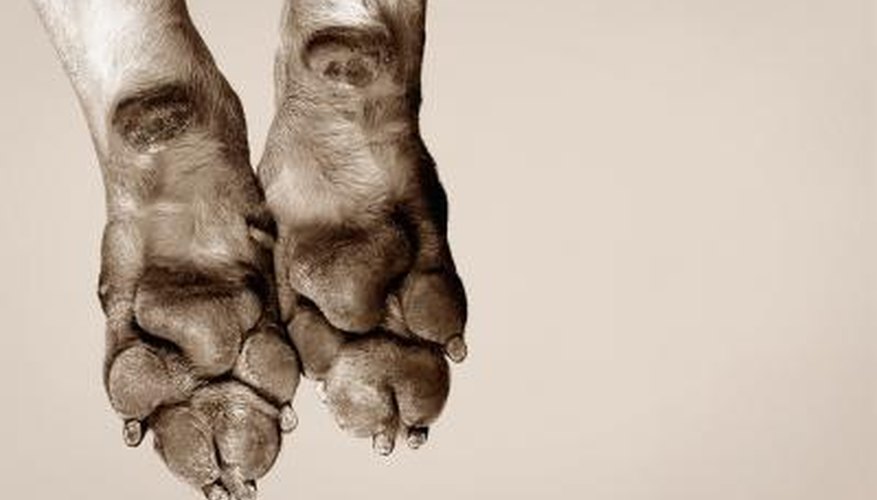Dogs get calluses on the pads of their paws from walking, without protection, on rough surfaces. Hot pavement or concrete in summer, and icy roads and salt in winter, all help to thicken the surface of the pads and create calluses. Normal calluses protect the sensitive pads from pressure and damage, but occasionally the calluses become thick or uneven and cause pain, especially in older dogs or those that spend many long hours on their feet. Most veterinarians will only remove calluses surgically if they're infected, and prefer to eliminate them by treatment.
- Dogs get calluses on the pads of their paws from walking, without protection, on rough surfaces.
- Normal calluses protect the sensitive pads from pressure and damage, but occasionally the calluses become thick or uneven and cause pain, especially in older dogs or those that spend many long hours on their feet.
Soak the affected paws daily in a solution of 1/2 cup of Epsom salts to 1/2 gallon of warm water. Epsom salts are made of magnesium sulphate, which acts as a natural exfoliator, reduces pain and swelling, and cleanses and softens.
Massage the dog's pads with cream while they're still damp. Use a moisturising cream such as Musher's Secret or Protecta Paw. These are creams formulated specially for dog paw pads; they contain lanolin, collagen and natural food waxes. Distract the dog for half an hour afterwards to give the cream time to be absorbed into the skin.
Give your dog a zinc supplement to promote healthy skin. They're available from most veterinarians and pet stores. Some breeds, such as Siberian huskies and Alaskan malamutes, have genetic defects that prevent them from absorbing zinc. Other breeds may have a zinc shortage if they eat low-quality commercial pet foods or take calcium supplements.
Fit your dog with boots for walking on hard surfaces. The dog will find it much more comfortable walking on hot or cold pavements, as well as gravel and rough ground. Get lightweight boots for summer and waterproof ones for winter; they should have slightly padded soles to provide additional relief.
- Give your dog a zinc supplement to promote healthy skin.
- The dog will find it much more comfortable walking on hot or cold pavements, as well as gravel and rough ground.
Prevent the recurrence of calluses by continuing to give the dog's feet weekly treatments. Take care not to let its feet have unprotected contact with hard surfaces for longer than an hour or two at a time. If the dog is overweight, a reducing diet may help to alleviate pressure on its feet.
TIP
If your dog has cracked or bleeding pads, sores, redness or swollen feet, consult your veterinarian in case they're caused by a medical condition such as liver disease or lupus.
WARNING
Never try to file or shave calluses from the paw pads using a blade or a human pedicure tool. If the paw calluses don't disappear after two weeks of treatment, take your dog to the veterinarian to see if he recommends surgical removal.
